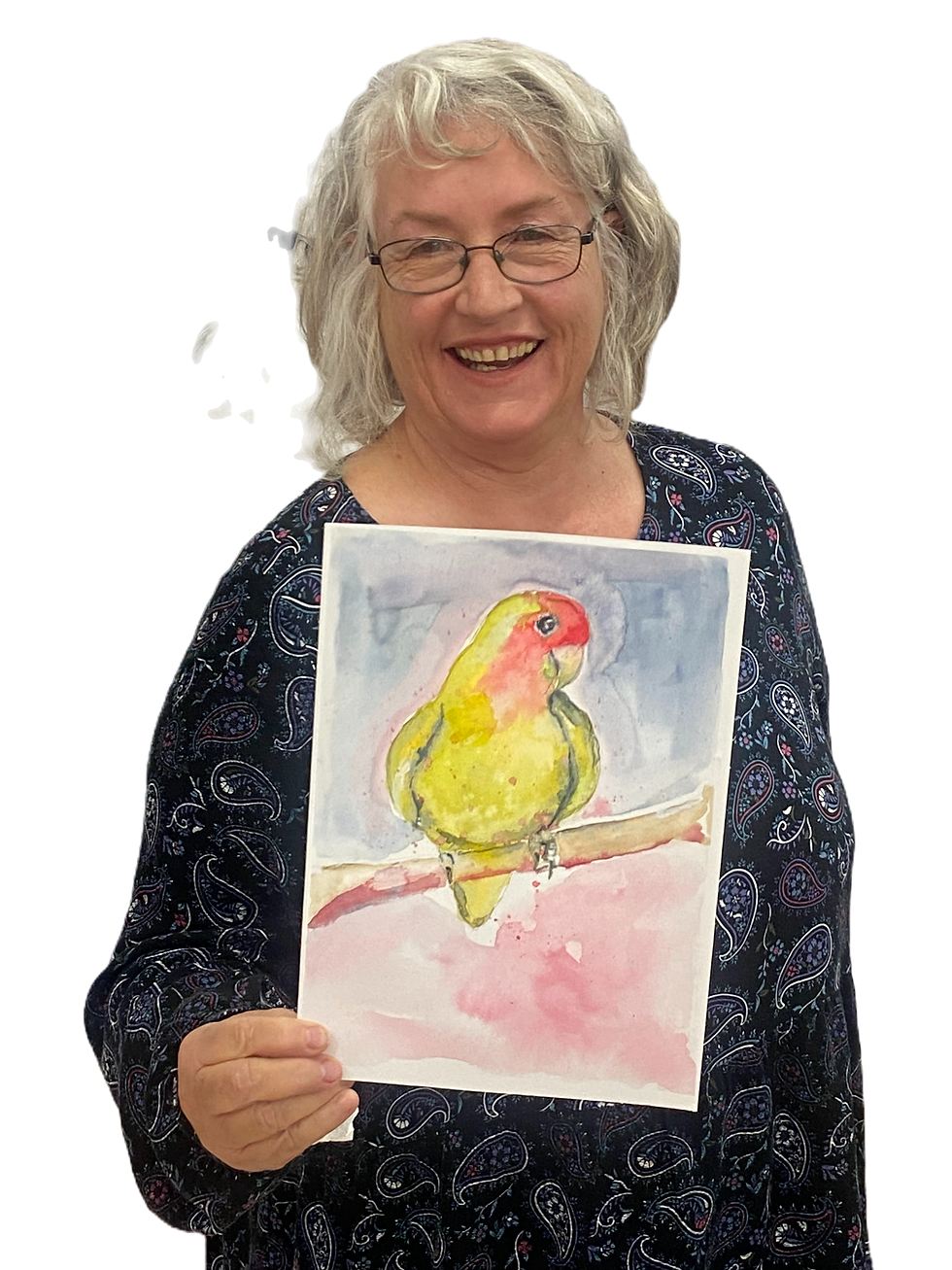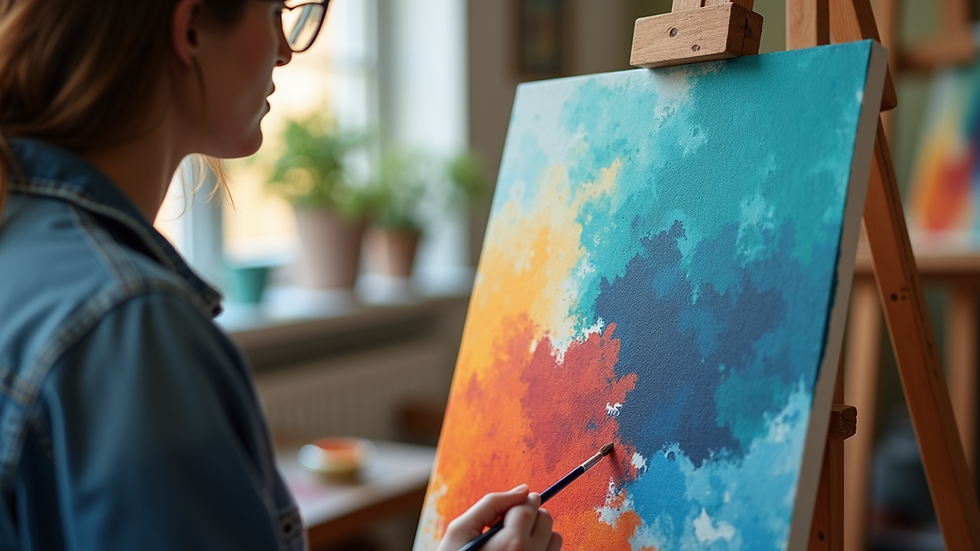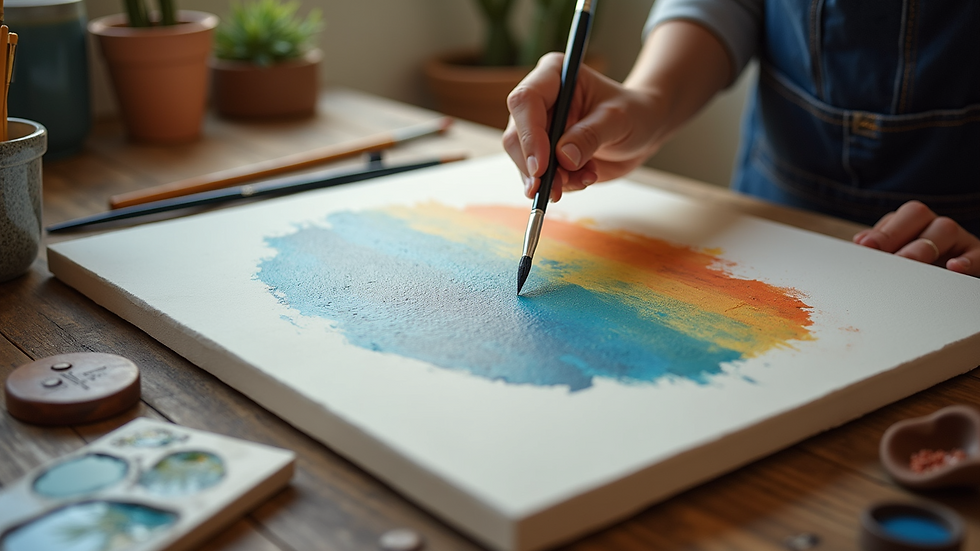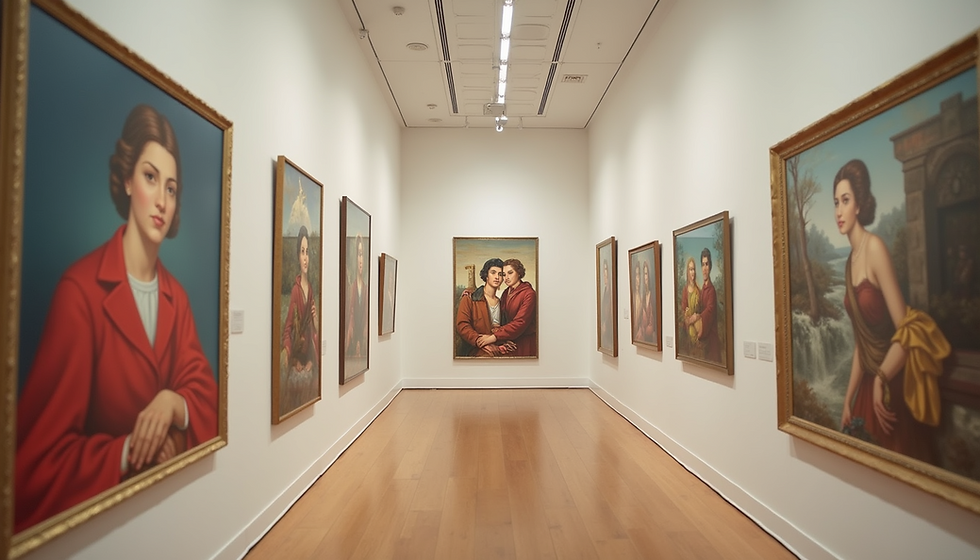What to Expect in a Local Painting Class - Applying the 80/20 rule in a local art class means:
- Jacqueline Supra
- Aug 6
- 4 min read
Joining a local painting class can be an exciting and rewarding experience. These classes are for everyone. They are great for beginners and those who want to get better. You will have a structured space to explore your creativity. You will learn various techniques, get hands-on practice, and receive guidance from experienced instructors. This post will walk you through what you can expect when you sign up for a local painting class, helping you prepare and make the most of your time.

Exploring the Benefits of a Seasons Art Class
Local painting classes provide a unique opportunity to connect with art in a personal and interactive way. Unlike learning from books or videos, these classes offer direct feedback and a chance to ask questions in real time. You will also meet fellow art enthusiasts, which can be motivating and inspiring.
In a typical local painting class, you will:
Learn about different painting mediums such as acrylics, oils, or watercolors.
Understand the basics of color theory and composition.
Practice brush techniques and layering.
Work on individual projects with instructor support.
Participate in group critiques to improve your skills.
These classes are for all skill levels. You can begin with simple exercises and then move on to more complex projects. The hands-on approach helps build confidence and encourages experimentation.

What to Expect in a Local Painting Class Setting
When you attend a local painting class, the environment is usually welcoming and relaxed. Classes are often held in community centers, art studios, or dedicated classrooms. You will find all the necessary materials provided or available for purchase, including canvases, paints, brushes, and palettes.
Your tutor will start with a demonstration. They will show you step-by-step how to create a specific effect or finish a painting. Afterward, you will have time to practice on your own canvas while the instructor offers personalized tips.
Some practical tips to prepare for your first class:
Wear comfortable clothes that you don’t mind getting paint on.
Bring a notebook to jot down techniques or ideas.
Arrive a few minutes early to set up your workspace.
Don’t hesitate to ask questions or request help.
The social aspect of these classes is also important. You might find yourself sharing ideas and experiences with others, which can enhance your learning and enjoyment.

What is the 80/20 Rule in Painting?
The 80/20 rule in painting is a helpful guideline. It suggests putting 80% of your effort into basic skills. You should spend 20% on trying new techniques or styles. This approach helps beginners build a strong foundation before moving on to more advanced or creative work.
For example, you might spend most of your time mastering brush control, color mixing, and composition. Once you feel comfortable, you can dedicate some time to exploring abstract styles, unusual color palettes, or mixed media.
Applying the 80/20 rule in a local painting class means:
Prioritising core lessons and exercises.
Using class projects to reinforce essential skills.
Allowing room for personal expression and creativity.
Receiving feedback focused on improving fundamentals.
This balance ensures steady progress and prevents frustration that can come from trying to do too much too soon.

How to Choose the Right Local Painting Class for You
Finding the right local painting class can make a big difference in your learning experience. Here are some factors to consider when selecting a class:
Skill Level - Look for classes that match your current ability, whether beginner, intermediate, or advanced.
Medium Focus - Decide if you want to work with acrylics, oils, watercolors, or mixed media.
Class Size - Smaller classes often mean more individual attention.
Tutor Experience - Research the tutors background and teaching style.
Schedule and Location - Choose a class that fits your availability and is easy to reach.
You can start by searching for painting classes near me to find options in your area. Many studios offer trial sessions or special offers, so you can try a class before committing.
Tips for Making the Most of Your Painting Class
To get the best results from your local painting class, consider these practical tips:
Practice Regularly: Painting skills improve with consistent practice outside of class.
Stay Open-Minded: Be willing to try new techniques and styles.
Ask for Feedback: Constructive criticism helps you grow as an artist.
Bring Your Own Ideas: Share your interests with the instructor to tailor projects.
Enjoy the Process: Focus on learning and having fun rather than perfection.
Remember, every artist develops at their own pace. Celebrate your progress and use each class as a stepping stone toward your creative goals.

Embarking on a local painting class journey is a wonderful way to nurture your artistic side. With the right mindset and preparation, you will gain valuable skills, meet like-minded people, and create beautiful works of art. Whether you want to paint for relaxation, self-expression, or professional growth, these classes offer a supportive and inspiring environment to help you succeed.





Comments